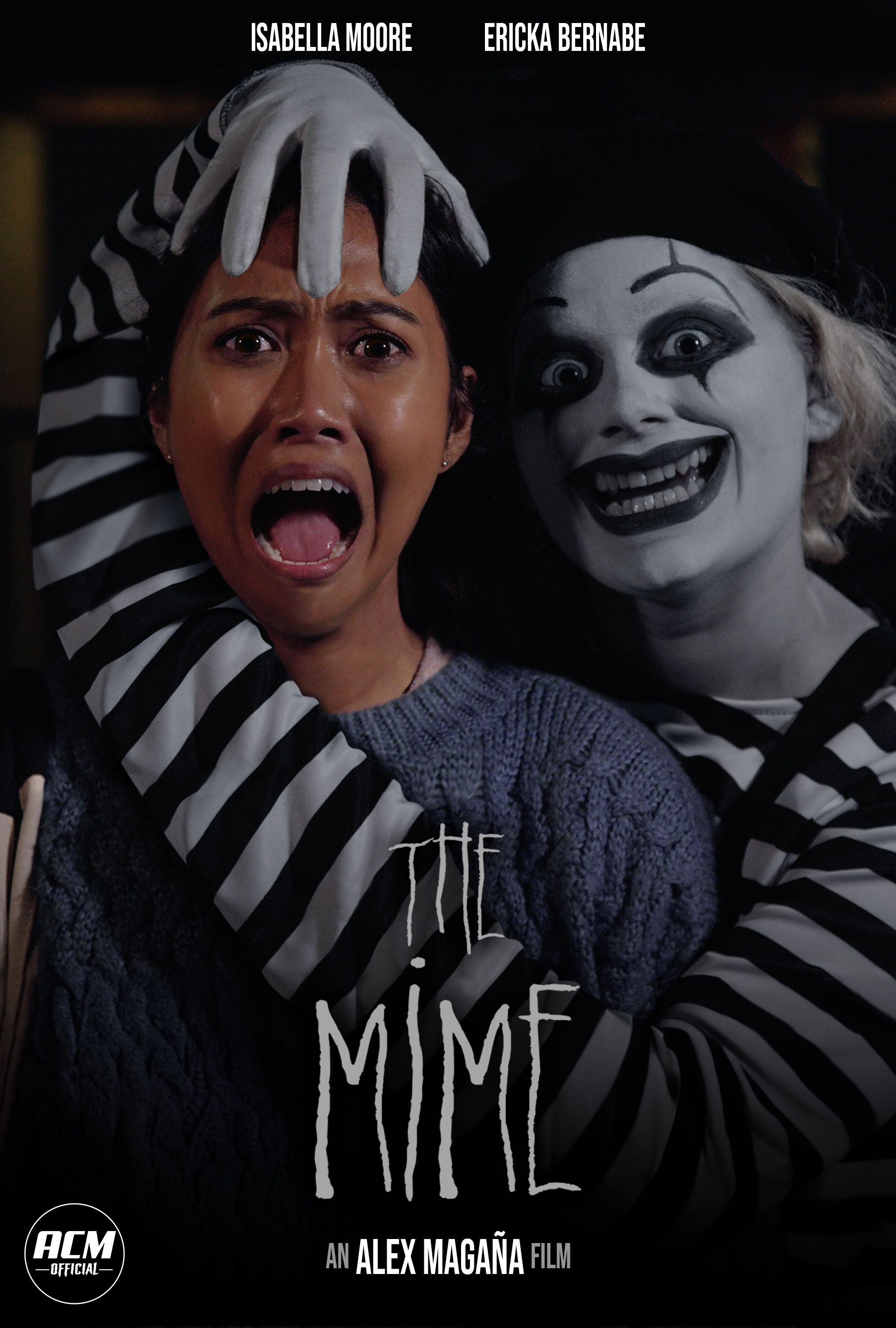
The Mime (2021) opens in a dimly lit park, where a street mime performs his silent routine with eerie precision. At first glance, his gestures seem harmless—tracing invisible walls, pretending to read a book—but when a careless passerby tosses trash nearby, the mime’s performance becomes disturbingly real. With a simple flick of his hand, the offender is pulled into an invisible trap, revealing that the mime’s illusions are far more than mere act—they’re deadly.
As the night deepens, a group of college students, drunk and rowdy, stumbles upon the mime. Mistaking him for easy entertainment, they mock and provoke him, unaware of the consequences. One by one, their laughter fades into panic as they find themselves caught in a game they cannot win. The mime remains silent throughout, his face unreadable, as he delivers judgment with ghostly finesse, turning their prank into a chilling spectacle of fear.
Later, the scene shifts to a desolate train station, where a lone commuter waits on the platform. The silence is suffocating, broken only by the sudden appearance of the mime in the shadows. He begins to mirror her movements, step by step, his intentions unclear but his presence unmistakably menacing. With no words, no sound, and no escape, she becomes trapped in his invisible cage, as reality bends to his silent will.
Without uttering a single line of dialogue, The Mime crafts a uniquely unsettling experience. The short film uses its titular character to twist the art of mime into something sinister, proving that horror doesn’t need screams to unsettle—it only needs silence, control, and the chilling realization that what you thought was pretend may actually be real.